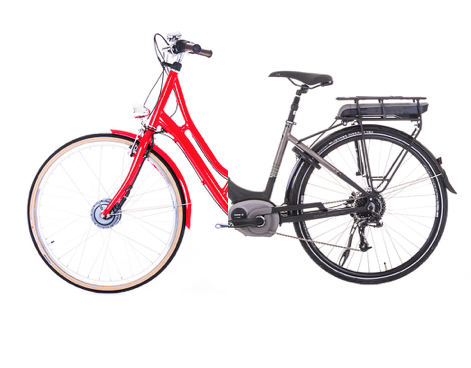So you’ve seen an Electric Bike advertised on the TV, or in the back of the Sunday Paper Magazines and it’s much cheaper than the ones you’re seeing in the local specialist Electric Bike Shop – Why is this?
We all know the phrase that “You get what you pay for” applies to many things we buy today and Electric Bikes are no exception. Of course, the questions that we then get asked regularly are:
- What are the differences?
- What do I get more of, if I pay more?
At Electric Bikes Sussex, we sell over 100 different models of Electric Bikes, but if we strip back the marketing to a base level, there’s (currently) 2 distinct types of Electric Bikes:
- Bikes with Hub motors – front wheel or rear wheel and
- Bikes with Crank Drive motors – also called mid-mount motors.
Let’s look in a bit more detail and examine a typical bike within each category. Before we start, it’s important to remember this is a generalisation of each type. There are definitely some exceptions and this article is not targeted at any given bike or brand. Specifically, some brands, like Go Cycle and other high-quality suppliers do not fit these stereo-types – they often have bespoke solutions that overcome the limitations below and are priced accordingly.
Hub Motors
As the name suggests, these have the Motor in the Front or less frequently, the Rear wheel. These effectively ‘pull’ or ‘push’ the bike along – much the same as a Car does. Of course, adding a motor to a bike wheel necessitates a non-standard wheel. If your chosen manufacturer cares about your ongoing Customer Satisfaction, they will often fit fatter spokes, more spokes, or ‘string’ it in a different pattern – all this is done to take the additional torque that’s created by the Motor.
The vast majority of Hub bikes have a control system that means the power is either “on” or “off”. There are various sensors that determine you’re speeding up, or slowing down, and whilst there might be different power levels, the bike still turns the Motor “on” or “off” as appropriate. This can sometimes give the feeling that the Bike is taking the rider, when perhaps they weren’t quite expecting it. Also, on loose or wet ground, traction can sometimes be a problem. This is rare, but can catch the less experienced rider by surprise.
Even within the Hub Motor bikes, there are different power levels, but for sure the lower cost bikes will have motors that produce less power – about 25Nm of torque is typical, although better ones will give 35Nm of torque or even more.
Of course, as this article is examining bikes that are legally Pedelecs and can be used in Public spaces in the UK, ALL are limited to 250w of Electric Power. We’ve all read the articles on Bikes that can outgun a NASA spaceship, well for a short distance at least!

Because the Motor is cheap, manufacturers often fit inferior and/or lower capacity batteries to Hub based Bikes. A good indicator of battery quality is the range that can be achieved per 100wh of capacity. High end Batteries give around 25 miles per 100wh and we’ve seen Hub based bikes fitted with batteries that give a figure that’s under 10! IE: Less than 40% as good!! Remember also that Lower quality batteries, take longer to charge; give less range and will come to end of life quicker. We get Customers visit the Shop regularly looking for replacement batteries, that are frequently not available. The most extreme example was a gentleman who’d had 3 batteries in 18 months at £300 per battery!
To continue the theme, the reality of lower cost motors and batteries, is that often the frames and components fitted are also at the lower end of the quality scale. Cheap tyres will give less grip; puncture more readily and need replacing quicker. Cheaper gears won’t change as slickly or reliably and cables will almost certainly be surface mounted and rust quicker. Shall we go on?
Pros: Price; Little or no resistance when not using Electric power.
Cons: Everything else
Crank Drive Motors
Again, as the name suggests, these power the Bike through the Pedal Cranks, in the same way that the rider does. Frequently made by companies like Bosch: Yamaha; Shimano and other International brands that care about their reputation. Reliability and efficiency is in-built and they are typically more powerful than the Hub varieties, with a power rating of between 50Nm and 80Nm of torque.
Much more sophisticated, they are incredibly intuitive to ride. The Crank Drive bikes ‘blend’ power in and out as appropriate – regularly measuring and adjusting 1,000’s of times a second. Often this is thought of as shades of grey, rather than the binary black and white of the hub motored bikes. Most have 5 power levels that support the rider by producing anything from 50% help, through to a massive 400% help. The latter is of most benefit when off-road on steep tracks and trails.
The virtuous circle continues with Batteries at the higher end of the quality level. Bosch claim they fit the highest Energy Density cells available. Replacements are expensive at between £500 - £750, but the likelihood that you need to buy one is quite remote. As a business, we’ve still not sold a replacement battery for a Crank Drive bike!

The Crank drive bikes are also more advanced in other ways, for example many of the Motor manufacturers have a “diagnostic” capability. This enables Specialist shops like ourselves, with the correct training and investment in equipment, to plug into your bike and get an accurate health check. Perhaps it’s reporting an error, or even a potential error that can be resolved before it causes a problem. Preventative maintenance is a great tool for saving money. The Diagnostic system can also often be updated – thus allowing you and your Electric Bike to benefit from any new features or functions that may be released.
The Crank drive motor also provides a more central weight distribution and a lower centre of gravity. It means that the gears, brakes; wheels; tyres etc. that are fitted are ‘standard’ industry components. It also ensures that taking a wheel out doesn’t involve disconnecting electrical cables, therefore making maintenance and repairs of any punctures to be resolved much easier.
Pros: Everything else.
Cons: Initial Price – but probably less over its life-span.
Have a look at our range of Electric Bikes here.
Summary
Having considerable experience of how Customers react, it’s very clear that Electric Bikes with the Crank drive motor system give better Customer Satisfaction. Of course, budget will always be a factor and not everyone can justify the additional cost. If a Hub based bike is right for you, then it is very important to go to the higher end of the market - £1,200 upwards is a good indicator. If budget allows, then look at bikes from reputable, established brands, with motors and batteries made by Companies you respect.
At Electric Bikes Sussex, we always want to understand your needs, your budget and any other preferences. We then suggest potentially suitable bikes from the wide range of models and brands that we sell – all of which meet our minimum quality standard. We’ll explain the respective benefits of each bike.
Finally, we offer a “Try before you Buy” demo ride, to reassure you that you’re spending your money wisely.
Have a look at our range of Electric Bikes here.





4 comments
paul crump
Thanks for the heads up, very informative.
Peter Wright
A very informative talk on HubVersus Krank,I’m going for Krank. Thank you.
Sue Walker
Now I get it. Thank you for saving me from a potential disaster buy!!!
John
An an excellent article which explains the advantages of
hub drive over crank drive . really great thank you